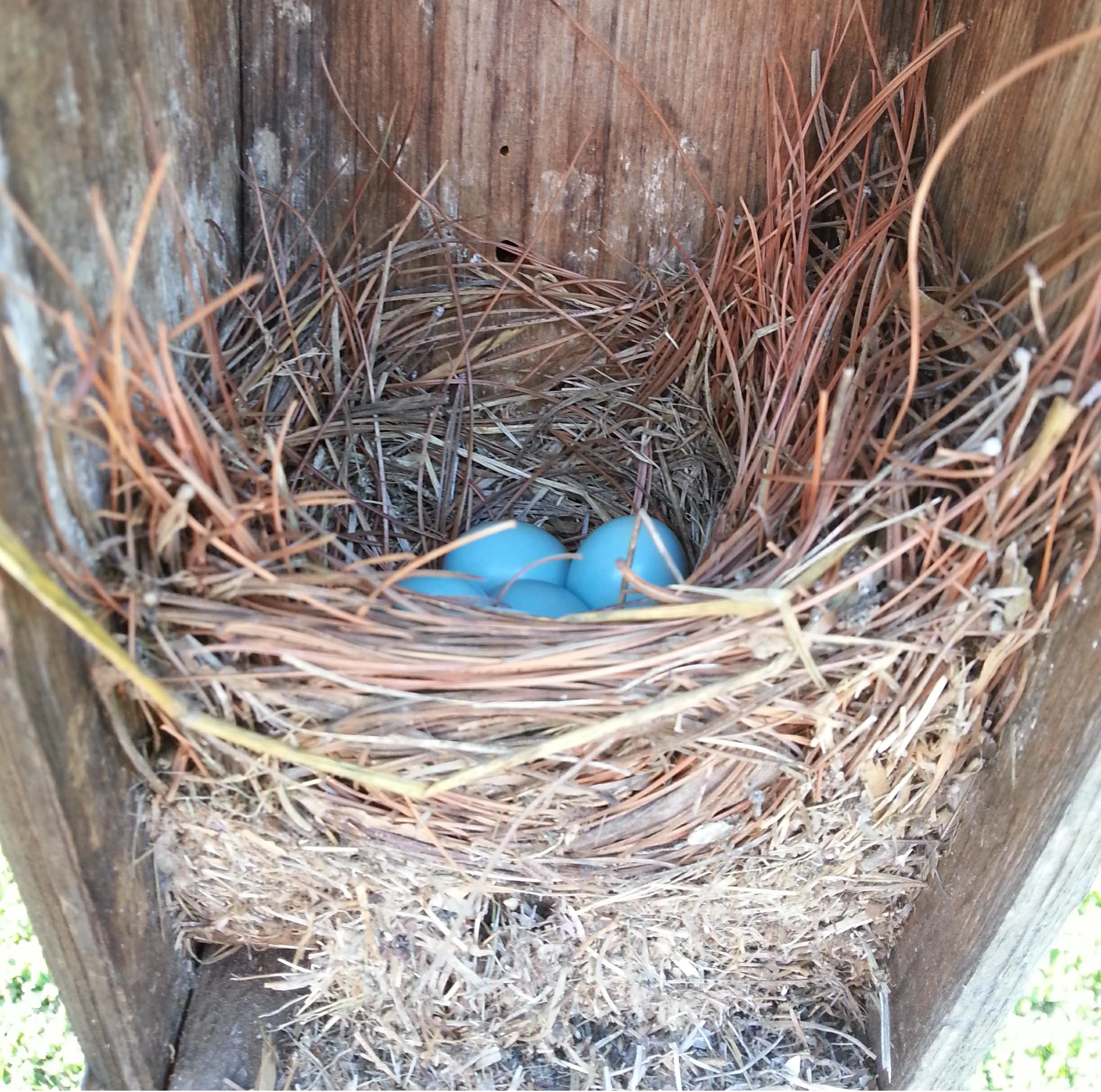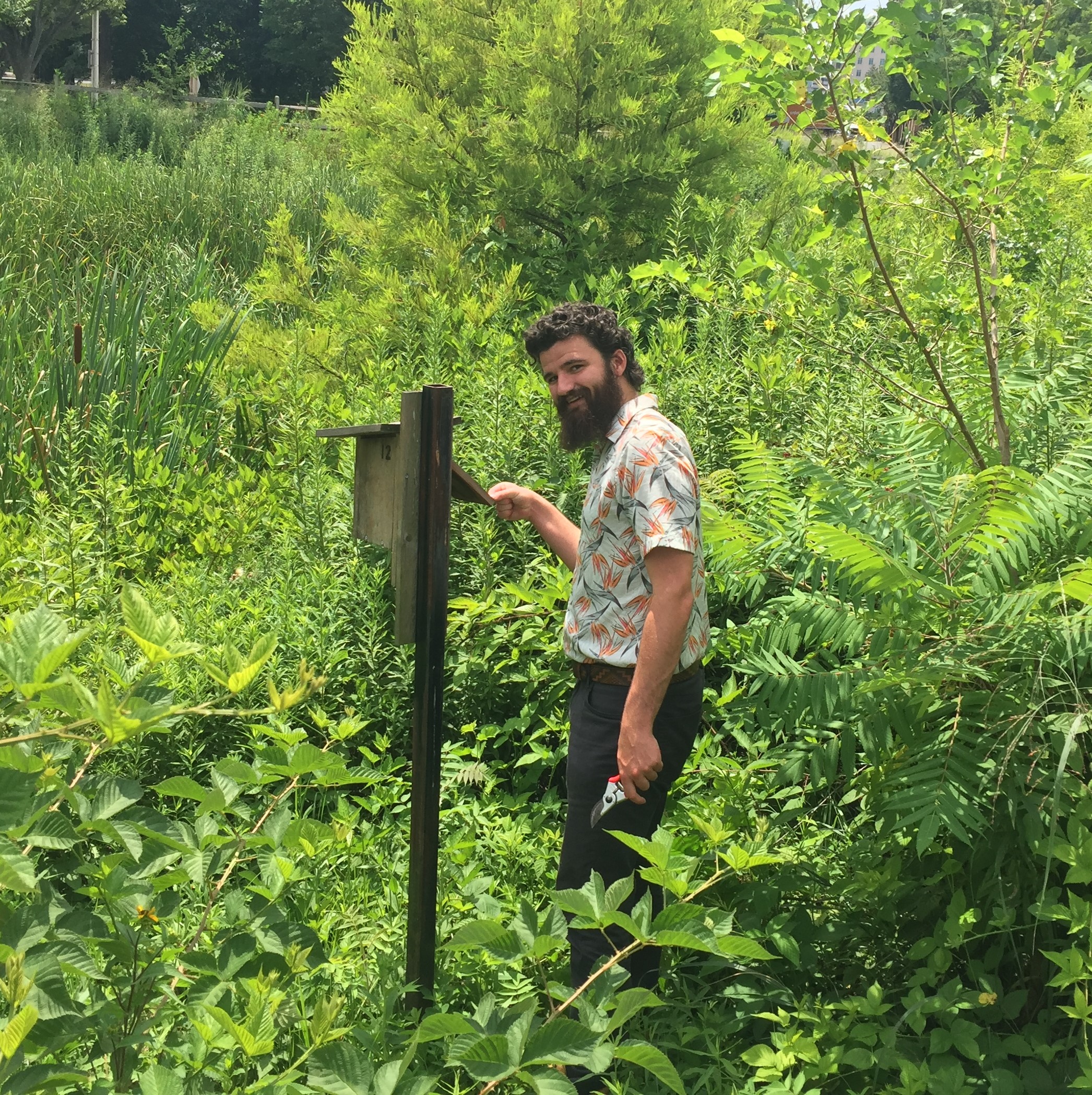
SUBSCRIBE PREVIOUS ISSUES
Spotlight
NIH in Bloom
As spring begins to blossom all around us, Connor Price, the NIH Landscape Architect, walks us through some of the natural features available on the Bethesda Campus.
“Well, certainly planting trees is important, which we do every year on campus. We plant 125 new trees to keep up with trees that die from disease or old age, or from storm damage. That helps with erosion, stormwater capture, even carbon capture."
Alongside replenishing trees, Connor and his team also maintain 'no-mow' natural areas on campus, which provides cost savings, wildlife habitat and emissions reduction. There is even a meadow within a natural area on the northside of campus that serves as a monarch butterfly sanctuary. Outside of the practical benefits, these trees and flowers also provide an aesthetic boost to the campus.

“Driving in this morning, I was thinking about how many great cherry blossoms we have on campus. They put on a great show from now until April at different times."
These cherry blossom trees are located near Buildings 10, 35, 37 and 41. For a full listing of the locations, click here.
Elm trees represent another important tree group on the Bethesda campus. They were popular as street trees until the devastation of the Dutch Elm disease in the 1930s. Lynn Mueller, the previous NIH Landscape Architect, contributed to the revitalization of these trees by lining Center Drive with them, and Connor diligently continues this legacy. But there are a pair of trees on the Bethesda campus that are even more storied than these.
“The Tree of Hippocrates was a tree on the Greek island of Kos. It's said this tree was where Hippocrates taught his classes. A cutting of that tree was donated to NIH in 1961. That tree lived until the early 2000s, then NIH made two clones of that tree."
These clones are planted at the National Library of Medicine near the Herb Garden as well as Building 10 North. Of course, maintenance of these clones and other plants aren't necessarily easy. Storms, disease, weeds, or even invasive plants such as the infamous Porcelain Berry vine serve as constant threats to our natural treasures. Fortunately, we have Connor and his team to help in protecting them!
For the full interview, click here or listen below.
Featured Article

|
The Bluebird Box Program
In 2002, the Bluebird Box Program began at the NIH to help with conserving the Eastern bluebird (Sialia sialis) and other native, cavity-nesting bird species. Now, over 20 years later, these bird populations have grown more than 4 times larger.
LEARN MORE
|
Take Action

| What To Do This Earth Day
This year marks the 55th anniversary of Earth Day! Started in 1970 and globalized in 1990, Earth Day has led to several historic environmental achievements in the past. This year, the theme is “Our Power, Our Planet."
LEARN MORE |
NEMS Training
Did you know? On Tuesday, April 22, Earth Day will have officially been around for 55 years! Celebrate this milestone anniversary by doing something sustainable, however big or small. To learn more about sustainability at the NIH, please visit the NEMS Training webpage to view a short (20 minute) NIH environmental awareness training video.
Newsletter Feedback If you found this article useful, please let us know! We appreciate hearing how we might improve our future articles, including topics you would like to read about. Please take a moment to complete this quick feedback form:
The NIH Green Zone Newsletter is a publication intended to inform NIH staff about the Division of Environmental Protection and NIH Green Teams projects and initiatives. The text contained in this newsletter is not copyrighted and can be reprinted without permission. If you use portions of this newsletter in your own publication, we ask that you please credit the source. We welcome your comments and suggestions. Thank you.
|
|---|
|
Division of Environmental Protection | Office of Research Facilities | Office of Management
National Institutes of Health | U.S. Department of Health and Human Services
|